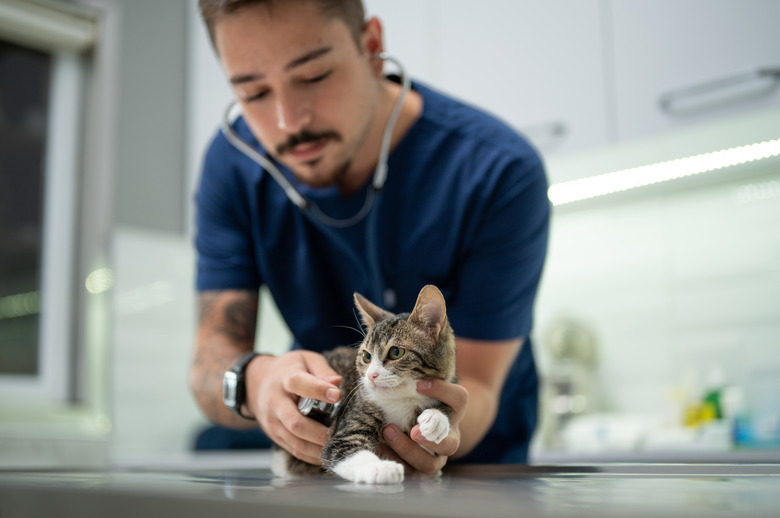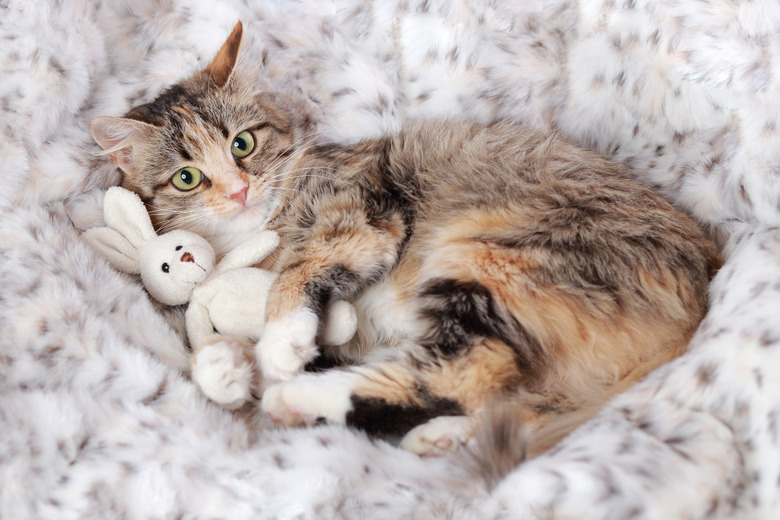Prednisone For Cats: Uses, Dosage, And Side Effects
If your cat suffers from asthma, allergies, or an immune-mediated disease, you may have heard your veterinarian discussing the medication prednisone. It is a valuable medication that is often used for its anti-inflammatory properties or its ability to suppress the immune system. It's an effective treatment option for short-term use under veterinary supervision, but it is not recommended for long-term treatment.
What is prednisone for cats?
What is prednisone for cats?
Prednisone is a corticosteroid (often simply referred to as a steroid or cortisone) that is given to cats for a wide variety of reasons. This is similar to steroid hormones produced naturally in the adrenal glands. When prednisone is converted in the liver, it is called prednisolone. It can be found in several name-brand veterinary medicines, including Prednis-Tab (prednisone) and Delta-Cortef (prednisolone). It is also available in generic form.
How is prednisone for cats administered?
How is prednisone for cats
administered?
Prednisone for cats comes in a syrup form, suspension liquid, injectable form in two concentrations, and in various-size tablets. Prednisolone is often given to cats instead of prednisone because it is easier for cats to metabolize. Pills are usually given. Injectables are preferred in cases of bacterial shock or CNS trauma (head trauma). If the medication is given orally, such as a pill or liquid solution, it should be given with food.
Prednisone dosage for cats
Prednisone dosage for cats
The correct dosage of prednisone for cats depends on several different factors, including:
- The
weight of the cat - The
cat's age - The
condition for which it is prescribed - Any
other medical conditions or medications
As each case is so different, you should speak with your veterinarian to find out the exact recommended dosage for your cat. They will have a full understanding of your cat's medical history and situation to make the best possible recommendation.
Uses of prednisone for cats
Treatment for anti-inflammatory
conditions
Prednisone is given to cats for several anti-inflammatory conditions, including inflammatory bowel disease, allergic reactions, asthma, severe skin disease, and any breathing problems caused by swellings.
For these cases, cats are usually started off at 0.5 to 1 milligram of prednisone per pound of body weight. This is given one or two times a day. When the cat seems better, one dose is given every other day until the cat is cured.
Prednisone as an immunosuppressant
If a cat has a condition that affects the immune system where the body is attacking itself, such as immune-mediated disease or cancer, then the prednisone dosage is different. It starts off at 1 to 3 mg per pound of body weight once a day. When the cat seems better, you can then start tapering off their use by switching to 1 to 2 mg every other day.
Treatment of Addison's disease
Addison's disease is a condition where the adrenal glands fail to produce enough of certain hormones, including the hormone cortisol. This condition is rare in cats, but those who are diagnosed can be treated with the use of medications like hydrocortisone, prednisone, or dexamethasone. This type of hormone therapy will be needed for the rest of your cat's life.
Side effects of prednisone for cats
Side effects of prednisone for
cats
Cats have a higher tolerance for prednisone than dogs or horses. This means that they rarely develop bad side effects or adverse effects. But it doesn't mean that they are guaranteed to be free of any side effects or complications when taking it. Cats who are on a non-steroidal anti-inflammatory should NOT take prednisone or prednisolone. Some of the more common side effects of prednisone use in cats include:
- Extreme
thirst - Frequent
urination - Sudden
unexplained weight gain - Gastrointestinal
problems such as stomach ulcers - Diarrhea
- Hair
loss - Panting or heavy mouth breathing
- Sudden behavioral
changes
Contact your veterinarian or the ASPCA Animal Poison Control Center if your cat is on prednisone/prednisolone and shows any of these side effects.
Some cats who become overweight because of prednisone may also develop diabetes mellitus. This is a complication that is regularly associated with being overweight. But it's also an increased risk for cats on prednisone because prednisone and prednisolone cause blood glucose levels to rise.
How long can a cat safely be on Prednisone?
How long can a cat safely be on Prednisone?
Cats can tolerate high doses like those at the top of the prednisone dosage scale for only a short time. If they are on prednisone for three to four months, the cat should be reevaluated for other underlying health conditions, and other treatment options, such as cyclosporine, should be explored. Long-term use could result in the development of more severe side effects, such as gastric ulcers and liver problems.
Also, because of the immunosuppressant nature of prednisone, annual vaccines may become less effective, which can lead to other problems. Continued use of any steroid, even if it is considered to be short-term use, should be monitored by your DVM with regular appointments.
The bottom line
The bottom line
Prednisone is a corticosteroid often used to treat asthma, allergies, and immune-mediated disease. While this is a valuable anti-inflammatory, higher doses should only be used for short periods. Side effects include gastrointestinal problems, increased thirst (and urination), weight gain, and panting. Long-term use could lead to liver problems or difficulties from a lowered immune system. Under careful veterinary supervision, prednisone and prednisolone can be used as a long-term management approach for conditions like Addison's disease.

